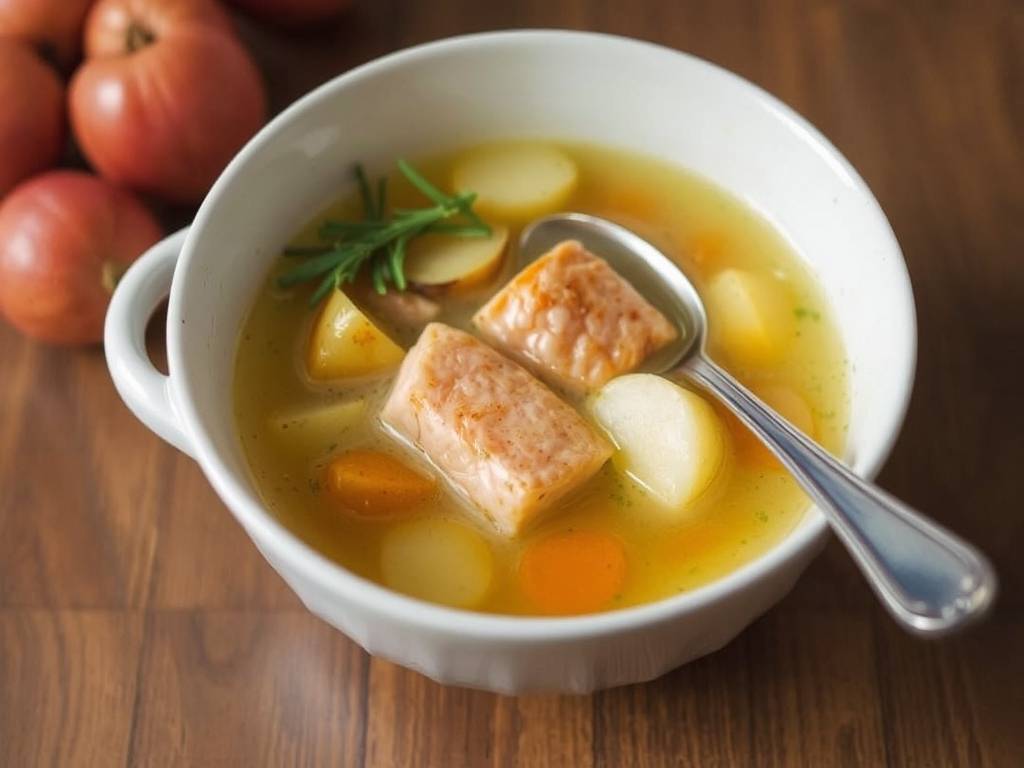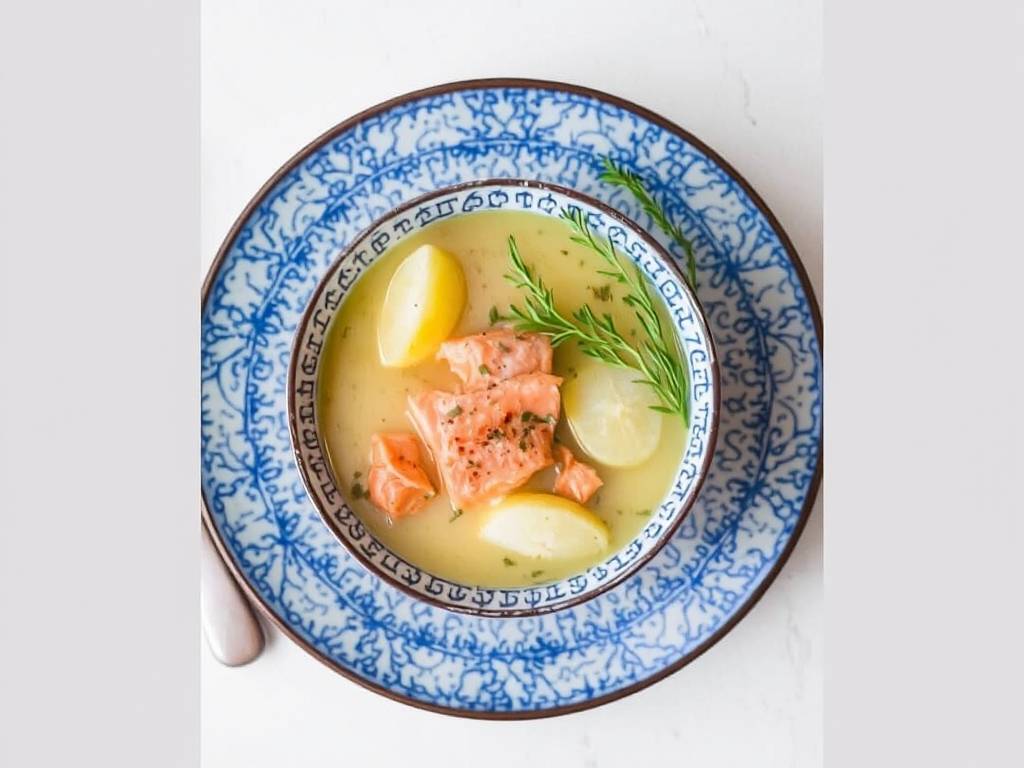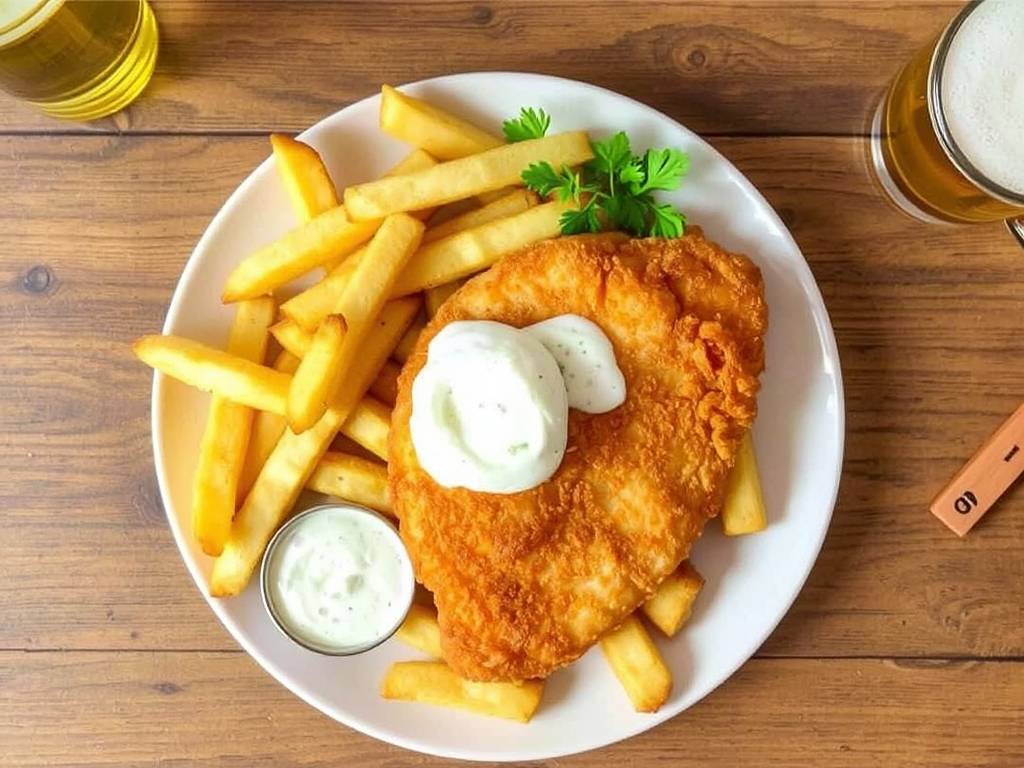Creamy Salmon and Potato Soup: A Comforting Bowl of Goodness
There's something truly magical about a warm bowl of soup on a chilly day. It comforts the soul, warms you from the inside out, and brings a sense of wholesome satisfaction. Among the vast universe of soups, a well-made salmon and potato soup holds a special place. It’s elegant enough for a dinner party yet simple enough for a cozy weeknight meal. If you've ever wondered how to create this culinary masterpiece at home, you've come to the right place. This comprehensive guide will walk you through every step, from selecting the perfect fillet to achieving that dreamy, creamy texture. We'll cover all your potential questions in one spot, ensuring you feel confident and inspired to make the best homemade salmon potato chowder.
Let's start with the heart of the matter: the ingredients. Gathering high-quality, fresh components is the first secret to an unforgettable soup. You will need:

- The Star: The Salmon. Aim for about 1 pound (450-500 grams) of fresh salmon fillet. Look for firm, brightly colored flesh with a pleasant, oceanic smell. You can use skin-on or skin-off based on your preference; we'll handle both. For a richer flavor, consider using wild-caught salmon for soup, but farm-raised works beautifully, too.
- The Base Vegetables (Aromatics): 1 large onion (diced), 2-3 cloves of garlic (minced), and 2-3 celery stalks (diced). This trio forms the flavor foundation.
- The Hearty Element: Potatoes. About 1.5 pounds (700 grams) of good soup potatoes is perfect. Waxy potatoes like Yukon Gold or Red Potatoes are excellent choices for this easy salmon chowder recipe because they hold their shape well and contribute to a creamier broth when they break down slightly.
- The Liquid: 4 cups of a good-quality fish stock or vegetable broth. Using fish stock will intensify the seafood flavor, but vegetable broth is a great alternative. You'll also need 1 cup of heavy cream, half-and-half, or even full-fat coconut milk for a dairy-free option.
- The Flavor Enhancers: 2 tablespoons of butter or olive oil, 2 tablespoons of all-purpose flour (for thickening, optional), 1 bay leaf, a pinch of dried dill or a small bunch of fresh dill, salt, and freshly ground black pepper. Fresh dill is a game-changer with salmon, so I highly recommend it.
Now, let's get to the fun part: the cooking process. Don't be intimidated; making healthy salmon potato soup is a straightforward and rewarding process.
Step 1: Prepare Your Ingredients This is a crucial step for a smooth cooking experience. Dice your onion, celery, and mince the garlic. Scrub the potatoes clean and cut them into ½-inch cubes. This ensures they cook evenly. Pat the salmon fillet dry with a paper towel and check for any small bones. Cut it into 1 to 2-inch chunks. Having everything prepped and within reach—a practice chefs call "mise en place"—makes the actual cooking feel like a graceful dance.
Step 2: Build the Flavor Foundation Place a large soup pot or Dutch oven over medium heat. Add the butter or olive oil. Once melted and shimmering, add the diced onion and celery. Sauté for 5-7 minutes until they become soft and translucent. Stir in the minced garlic and cook for another minute until fragrant. Be careful not to burn the garlic. This process of sweating the vegetables unlocks their natural sugars and creates a deep, savory base for your creamy salmon potato chowder.
Step 3: Create the Broth and Add Potatoes If you're using flour for a thicker soup, sprinkle it over the cooked vegetables now. Stir constantly for about a minute to cook out the raw flour taste. This is your roux. Slowly pour in the fish or vegetable stock, whisking continuously to prevent any lumps from forming. Add the bay leaf, a generous pinch of salt, and pepper. Bring the broth to a gentle simmer.
Add the cubed potatoes to the pot. Bring the soup back to a simmer, then reduce the heat to low, cover, and let it cook for about 15-20 minutes, or until the potatoes are just tender when pierced with a fork. You don't want them to be mushy yet.
Step 4: The Grand Finale - Adding the Salmon and Cream This is the most delicate step. Gently place the chunks of salmon into the simmering broth. The key here is not to overcook the salmon. It will cook quickly in the hot liquid. Let it simmer for about 3-5 minutes. You'll know it's done when the salmon turns from translucent to opaque and flakes easily with a fork. Overcooking will make it tough and rubbery.

Once the salmon is cooked, turn the heat down to the lowest setting. Remove the bay leaf. Stir in the heavy cream (or your chosen creamy element) and the fresh dill. Taste the soup—this is your moment to be the chef. Adjust the seasoning with more salt and pepper if needed. The soup is now ready to serve.
Addressing Your Soup-Making Queries
You might have a few questions at this point, so let's tackle them right here.
- "Can I use canned salmon?" Absolutely! Using canned salmon for quick soup is a fantastic shortcut. Drain the canned salmon and flake it. Add it at the very end, just before adding the cream, as it only needs to be heated through.
- "How can I make this soup thicker or thinner?" For a thicker soup, you can mash some of the cooked potatoes against the side of the pot with a fork before adding the salmon. Alternatively, you can create a slurry by mixing one tablespoon of cornstarch with two tablespoons of cold water and stirring it into the simmering broth. For a thinner soup, simply add a bit more broth or water.
- "What are some tasty add-ins?" Get creative! A cup of fresh or frozen corn added with the potatoes adds sweetness and color. A handful of spinach or kale stirred in right at the end wilts beautifully and boosts the nutrition. A squeeze of fresh lemon juice right before serving can brighten all the flavors wonderfully.
- "How do I store and reheat leftovers?" This one-pot salmon potato meal stores wonderfully. Let it cool completely before transferring it to an airtight container. It will keep in the refrigerator for up to 3 days. Reheat it gently on the stovetop over low heat, stirring occasionally. Avoid boiling it, as this can cause the cream to separate and the salmon to become tough.
And there you have it! A detailed, foolproof path to creating a luxurious, comforting, and utterly delicious salmon and potato soup. This isn't just a recipe; it's a foundation. Once you master the basic technique, you can adapt it to your taste, making it your own signature dish. So, grab your pot, embrace the simple, joyful process of cooking, and get ready to enjoy a bowl of pure, heartwarming goodness. Happy cooking






发表评论